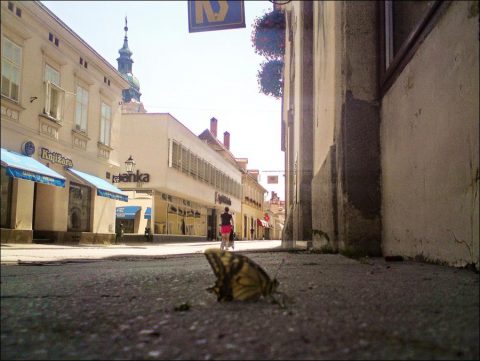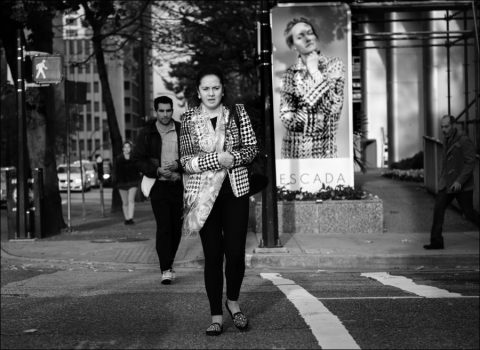Street photography is one of the most challenging, but at the same time one of the most rewarding genres of photography. Documenting people in their everyday environment is not easy – it requires patience, hard work and sometimes even some bravery to be able to approach and photograph complete strangers. In this article, we will take a close look at what street photography is, how it differs from other genres of photography and provide some helpful tips to get you started.
Street photography is defined as “photography conducted for art or enquiry that features unmediated chance encounters and random incidents.” Typically, street photography is about candidly capturing life in public areas. And contrary to its name, street photography does not have to be done on the streets. You can do street photography anywhere.
For example, when I lived in small-town Mississippi, I spent a lot of time at the beach. On rainy days, I often gravitate to museums, coffee shops or even the mall. One of my favorite places to shoot is on public transportation. You can always find great subjects on buses and trains.
And, don’t discard rural areas. Even if you don’t live in a big city, that shouldn’t hold you back from starting your street photography adventures.
What makes a good street photograph?
Right now, social media is flooded with mediocre and subpar street photography. Just pointing your lens in the direction of a person on the street does not qualify as street photography. As in all photography, how you compose your image will make or break your photograph.
A good street photo needs a clearly defined subject. All the rules (and I use that word loosely) of composition, such as rule of thirds, leading lines, use of negative space, symmetry, frames, etc. still hold. Try and tell a story with your images. Create photographs where the viewer pauses and asks questions.
Do street photos need people?
Whether or not street shots need people in them is up for debate. Sticklers say that all street photographs must contain people. However, I take a more laid back approach. While I believe that street photographs do not need people, they do need the suggestion that someone was there. For example, shadows can be used to capture thought-provoking shots, even if you can’t see the humans casting them. I also like to photograph things left behind by people. These images leave the viewer wondering what the story is behind the discarded objects.
Is all street photography candid?
Again, the sticklers out there will say “yes,” you must shoot street photography candidly. Still, I disagree. While some folks say that street portraits are another genre of photography, I lump them under the street photography umbrella. A street portrait requires you to interact with your subject. Interacting with a stranger may strike fear into those just starting. However, I have met some fascinating people this way. I will talk more about getting over that fear in a bit.
Another type of non-candid street photography occurs when you make eye contact with your subject. Purists will say that eye contact takes away from the spontaneity of the moment, and thus alters the scene. I make it a rule never to initiate eye contact by hovering over a subject. However, if my subject notices me and looks up just as I snap the shutter, I don’t disregard the shot. These chance encounters often add a bit of humour to the image. And eye contact often makes an image more intimate.
Hits: 86

